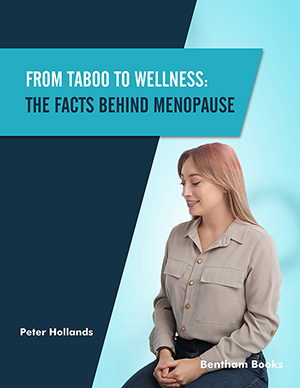Abstract
Pre-eclampsia is a type of hypertension that affects several organs during pregnancy. Preeclampsia, on the other hand, does not go away once the baby is born, but it can harm the mother and her children for years. A pre-eclamptic woman is at risk for cerebrovascular disease, cardiovascular disease, renal disease, and metabolic abnormalities later in life if she has pre-eclampsia. In research, children born to pre-eclamptic moms have had a variety of issues. These conditions are associated with cardiovascular, respiratory, neurological, and gastrointestinal issues later in life. The purpose of this study is to learn more about the long-term impact of pre-eclampsia on both mothers and children. Pregnancy and postpartum offer a unique window of opportunity for screening and intervention for both mother and child in the interests of health maintenance and disease prevention.
Keywords: Pre-eclampsia, cerebrovascular disease, cardiovascular disease, metabolic disorder, pathophysiology, long term.
[http://dx.doi.org/10.1002/pd.5645] [PMID: 31955436]
[http://dx.doi.org/10.3126/nje.v9i4.23150] [PMID: 31970014]
[http://dx.doi.org/10.1016/S0140-6736(15)00070-7] [PMID: 26342729]
[PMID: 24400024]
[http://dx.doi.org/10.1007/s41669-020-00197-9] [PMID: 32026397]
[http://dx.doi.org/10.1016/j.plefa.2020.102098] [PMID: 32380367]
[http://dx.doi.org/10.7759/cureus.6115] [PMID: 31886054]
[http://dx.doi.org/10.1161/CIRCRESAHA.118.313276] [PMID: 30920918]
[http://dx.doi.org/10.1136/bmjopen-2018-026920] [PMID: 30804037]
[http://dx.doi.org/10.1111/ajo.12971] [PMID: 30883684]
[http://dx.doi.org/10.1097/MNH.0000000000000105] [PMID: 25636145]
[http://dx.doi.org/10.2174/1381612053381828] [PMID: 15777227]
[http://dx.doi.org/10.11604/pamj.2019.33.200.16857] [PMID: 31692749]
[http://dx.doi.org/10.1055/s-0035-1565923] [PMID: 26929869]
[http://dx.doi.org/10.1155/2011/214365]
[http://dx.doi.org/10.1002/cphy.c200008] [PMID: 33295016]
[http://dx.doi.org/10.1186/s40885-019-0120-1] [PMID: 31304042]
[http://dx.doi.org/10.4103/ija.IJA_475_18] [PMID: 30237592]
[PMID: 21822394]
[http://dx.doi.org/10.3389/fphys.2018.01771] [PMID: 30618791]
[http://dx.doi.org/10.1016/j.jri.2019.07.004] [PMID: 31301487]
[http://dx.doi.org/10.1016/j.semnephrol.2010.10.004]
[http://dx.doi.org/10.1007/s11906-017-0757-7] [PMID: 28689331]
[http://dx.doi.org/10.1155/2014/910751]
[http://dx.doi.org/10.3389/fmed.2017.00239] [PMID: 29354635]
[http://dx.doi.org/10.1038/ncpneph0035] [PMID: 16932375]
[http://dx.doi.org/10.1172/JCI89031] [PMID: 27841759]
[http://dx.doi.org/10.1097/FM9.0000000000000005]
[http://dx.doi.org/10.3390/jcdd5010003] [PMID: 29367581]
[http://dx.doi.org/10.1016/j.ejogrb.2013.09.021] [PMID: 24128926]
[http://dx.doi.org/10.1253/circj.CJ-15-029733]
[http://dx.doi.org/10.1161/HYPERTENSIONAHA.118.11513] [PMID: 31055951]
[http://dx.doi.org/10.1161/HYPERTENSIONAHA.118.11320] [PMID: 30571227]
[http://dx.doi.org/10.1016/j.arr.2018.06.006] [PMID: 30026172]
[http://dx.doi.org/10.1080/13803395.2016.1143453] [PMID: 26949992]
[http://dx.doi.org/10.1016/j.ajog.2017.03.008] [PMID: 28322777]
[http://dx.doi.org/10.1080/00016340801915127] [PMID: 18382865]
[http://dx.doi.org/10.1152/ajpregu.00372.2015] [PMID: 26400187]
[http://dx.doi.org/10.1016/S0140-6736(19)31993-2] [PMID: 31472929]
[http://dx.doi.org/10.1055/s-0038-1675374] [PMID: 30380577]
[http://dx.doi.org/10.1016/j.earlhumdev.2016.09.007] [PMID: 27659865]
[http://dx.doi.org/10.1161/HYPERTENSIONAHA.110.157743] [PMID: 20956732]
[http://dx.doi.org/10.1016/j.ejphar.2017.09.012] [PMID: 28899695]
[http://dx.doi.org/10.1007/s40620-016-0342-1] [PMID: 27491315]
[PMID: 63936]
[http://dx.doi.org/10.1016/S0950-3552(05)80330-X] [PMID: 7924017]
[http://dx.doi.org/10.3389/fmed.2020.00022] [PMID: 32118007]
[http://dx.doi.org/10.1097/AOG.0000000000001374] [PMID: 27054929]
[http://dx.doi.org/10.1097/AOG.0b013e31826d60c5] [PMID: 23090519]
[http://dx.doi.org/10.1016/j.jri.2009.04.009] [PMID: 19628283]
[http://dx.doi.org/10.1016/j.jri.2007.03.016] [PMID: 17493685]
[http://dx.doi.org/10.1006/mgme.2000.2964] [PMID: 10720442]
[http://dx.doi.org/10.1097/01.aoa.0000410805.16137.2a]
[http://dx.doi.org/10.1155/2013/953150] [PMID: 23690796]
[http://dx.doi.org/10.1177/1753944708094227] [PMID: 19124425]
[http://dx.doi.org/10.1002/ppul.24659] [PMID: 31985889]
[http://dx.doi.org/10.1542/peds.2007-3666] [PMID: 18977989]
[http://dx.doi.org/10.1136/bmj.f4089] [PMID: 23838554]
[http://dx.doi.org/10.1016/j.preghy.2019.06.005] [PMID: 31487632]













